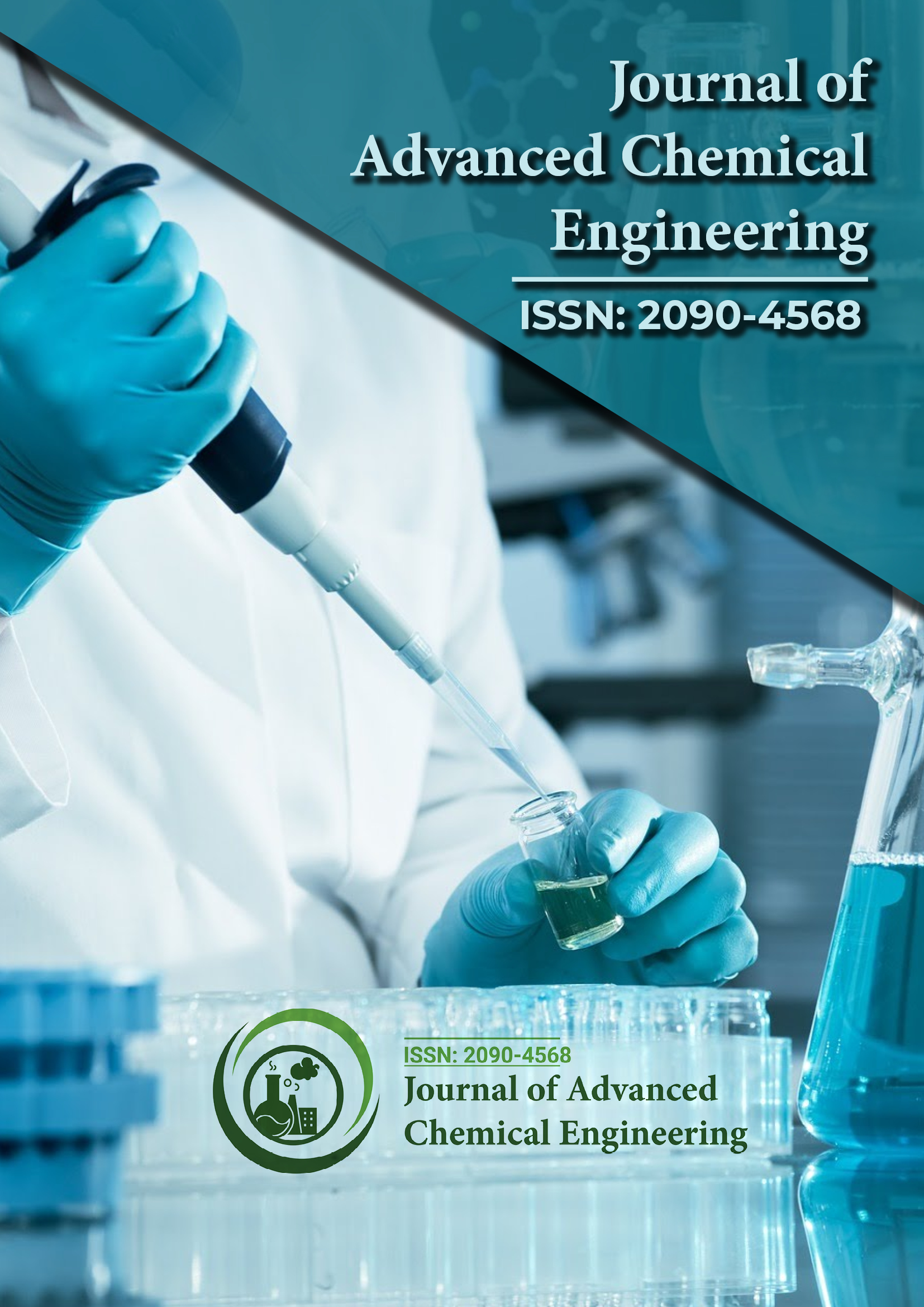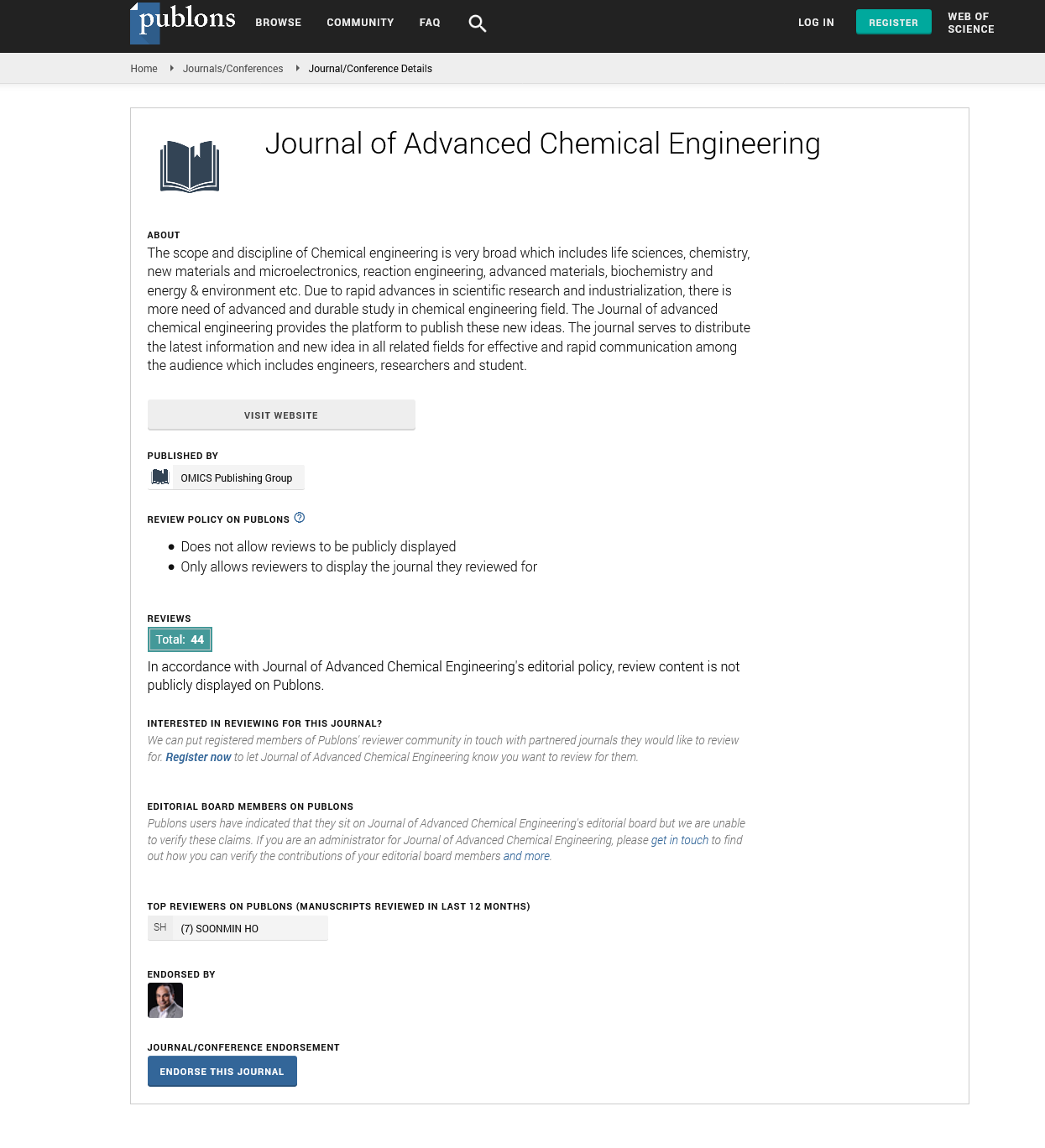Indexed In
- Open J Gate
- Genamics JournalSeek
- Smithers Rapra
- RefSeek
- Directory of Research Journal Indexing (DRJI)
- Hamdard University
- EBSCO A-Z
- OCLC- WorldCat
- Scholarsteer
- Publons
- Geneva Foundation for Medical Education and Research
- Google Scholar
Useful Links
Share This Page
Journal Flyer

Open Access Journals
- Agri and Aquaculture
- Biochemistry
- Bioinformatics & Systems Biology
- Business & Management
- Chemistry
- Clinical Sciences
- Engineering
- Food & Nutrition
- General Science
- Genetics & Molecular Biology
- Immunology & Microbiology
- Medical Sciences
- Neuroscience & Psychology
- Nursing & Health Care
- Pharmaceutical Sciences
Commentary - (2023) Volume 13, Issue 6
Challenges and Opportunities in Upstream and Downstream Bioprocessing
Serca Beng*Received: 24-Nov-2023, Manuscript No. ACE-23-24083; Editor assigned: 27-Nov-2023, Pre QC No. ACE-23-24083 (PQ); Reviewed: 12-Dec-2023, QC No. ACE-23-24083; Revised: 19-Dec-2023, Manuscript No. ACE-23-24083 (R); Published: 26-Dec-2023, DOI: 10.35248/2090-4568.23.13.320
Description
The field of bioprocessing encompasses two critical stages: upstream and downstream processes. These stages play pivotal roles in the production of biopharmaceuticals, biofuels, enzymes, and other byproducts. Upstream bioprocessing involves the cultivation and growth of living cells or microorganisms to produce desired byproducts, while downstream bioprocessing involves the isolation, purification, and recovery of these products. Challenges and opportunities abound in both upstream and downstream bioprocessing, shaping the landscape of biotechnology and industrial biomanufacturing.
Upstream bioprocessing confronts several challenges, primarily associated with optimizing cell culture conditions, maximizing product yield, and ensuring consistent quality. The cultivation of cells or microorganisms in bioreactors demands precise control over environmental factors such as pH, temperature, oxygen levels, and nutrient availability. Maintaining optimal conditions throughout the fermentation process is essential for achieving high cell densities and product titers. However, this necessitates sophisticated monitoring and control systems, which can be costly and complex to implement.
Furthermore, variability in raw materials and biological systems poses a significant challenge in upstream bioprocessing. The quality and composition of raw materials, such as media components and nutrients, can impact cell growth and product formation. Addressing variability requires Sturdy quality control measures and the development of standardized, defined media formulations to ensure reproducibility and consistency in bioproduction.
In addition, the scalability of upstream processes presents a significant challenge. Transitioning from laboratory-scale to commercial-scale production often results in changes in mass transfer, mixing characteristics, and heat dissipation within bioreactors. Scaling up while maintaining optimal conditions and productivity levels demands careful engineering and design considerations, alongside a thorough understanding of the biological system.
However, amid these challenges lie significant opportunities in upstream bioprocessing. Advances in biotechnology, genetic engineering, and synthetic biology have facilitated the development of high-yielding cell lines and genetically modified organisms capable of producing valuable byproducts. Genetic manipulation allows for the enhancement of metabolic pathways, leading to increased productivity and the synthesis of novel compounds.
Moreover, the integration of innovative technologies such as continuous bioprocessing and single-use systems presents opportunities for improving efficiency and flexibility in upstream operations. Continuous bioprocessing enables continuous production, reducing downtime between batches and increasing overall productivity. Single-use systems offer advantages in terms of flexibility, cost-effectiveness, and mitigating the risk of crosscontamination, thereby streamlining upstream processes.
Moving to downstream bioprocessing, challenges predominantly revolve around purification and recovery of byproducts from complex biological mixtures. The diversity of biomolecules and their interactions necessitate intricate separation and purification techniques. Downstream processes often involve multiple steps, including cell disruption, filtration, chromatography, and concentration, each demanding specialized equipment and expertise.
One of the significant challenges in downstream bioprocessing is the development of efficient and selective purification methods. Traditional purification techniques might not be suitable for all biomolecules or may result in low yields and purity. Thus, there is a need for novel separation technologies, such as membranebased separations, affinity chromatography, and advanced filtration methods, to enhance purification efficiency while maintaining product quality.
Additionally, downstream processing often accounts for a substantial portion of the overall production costs. Optimization of downstream operations to reduce costs and increase overall process efficiency remains a key challenge. Innovations in process intensification, automation, and the implementation of predictive modeling and simulation tools offer opportunities to streamline downstream processes, decrease processing times, and lower manufacturing expenses.
Nevertheless, the evolution of downstream bioprocessing presents capable opportunities. Technological advancements in analytical tools and process monitoring enable real-time monitoring of bioprocesses, facilitating process control and optimization. Continuous improvements in purification techniques, coupled with the development of high-affinity chromatography resins and efficient filtration systems, contribute to higher purity and yield of byproducts.
Furthermore, the emergence of integrated and multifunctional downstream platforms presents opportunities for streamlined and more cost-effective purification processes. These platforms aim to combine multiple unit operations into integrated systems, reducing the number of processing steps and minimizing the overall footprint of downstream facilities.
Conclusion
In conclusion, while challenges persist in both upstream and downstream bioprocessing, opportunities for innovation and advancement abound. Overcoming challenges in cell culture optimization, scalability, variability, and purification techniques requires concerted efforts and interdisciplinary collaborations. Embracing technological innovations, genetic engineering advancements, and novel process design approaches can pave the way for more efficient, cost-effective, and sustainable bioprocessing strategies, driving the biotechnology industry toward greater heights of productivity and innovation.
Citation: Beng S (2023) Challenges and Opportunities in Upstream and Downstream Bioprocessing. Adv Chem Eng. 13:320.
Copyright: © 2023 Beng S. This is an open-access article distributed under the terms of the Creative Commons Attribution License, which permits unrestricted use, distribution, and reproduction in any medium, provided the original author and source are credited.

